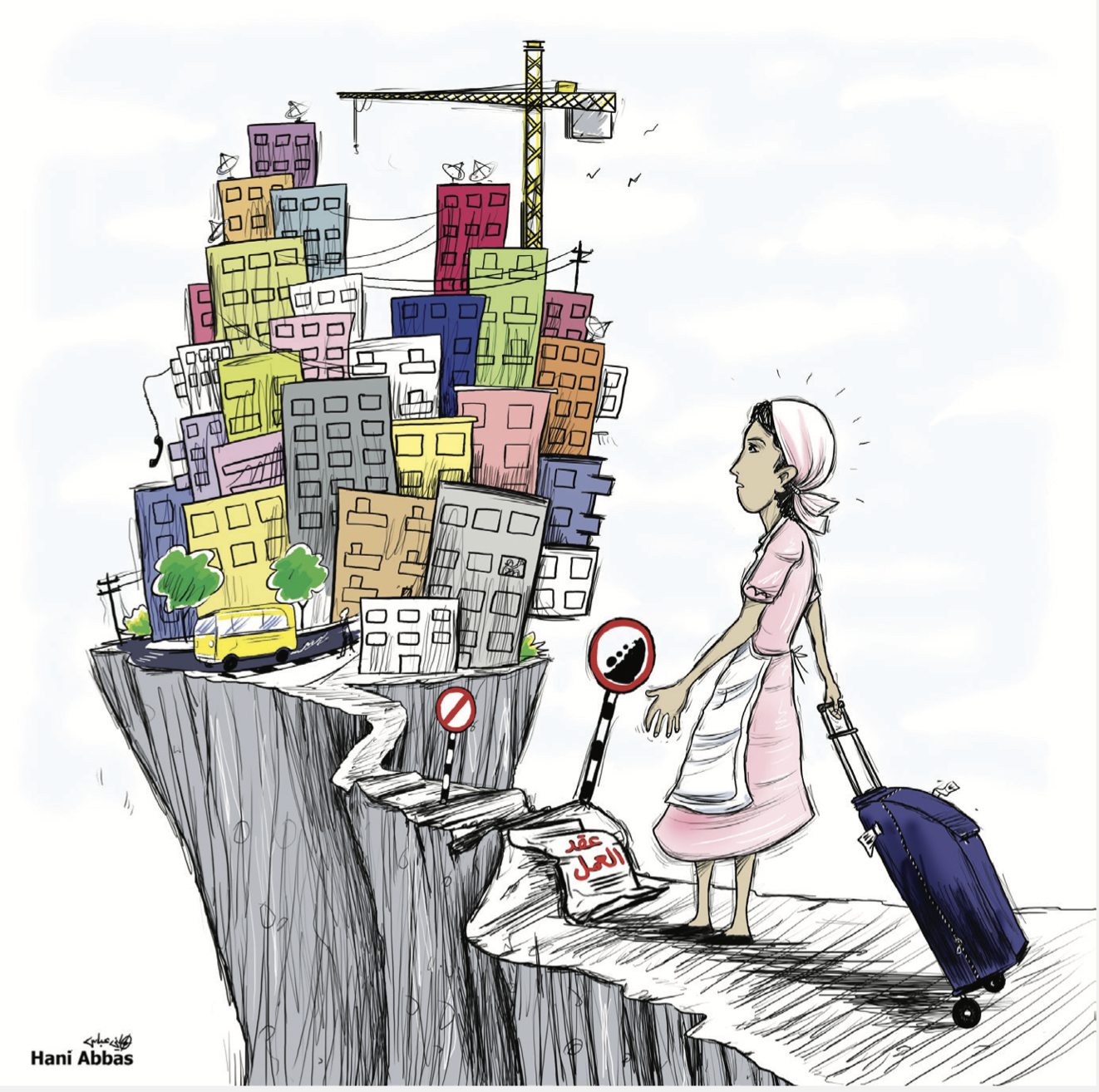Post-Covid Re-Globalization Means: Re-Writing the Global Development Agenda. A Gender Perspective on Labor and Economic Growth
archive


Image used from Society for International Development, June 2015.
Post-Covid Re-Globalization Means: Re-Writing the Global Development Agenda. A Gender Perspective on Labor and Economic Growth
In July 2020, as the Covid-19 pandemic was still in its early days and well before the outbreak of Russia’s Ukraine war in Ukraine, Nature wrote in its Editorial that it is “time to revise the Sustainable Development Goals (SDGs)” as “[t]he pandemic has set back efforts to achieve the original 2015 SDG targets. The need for change to make them more attainable is stronger than ever.” More than two and a half years later, the end of the pandemic constitutes an opportunity to rethink the shortcomings of the SDGs and act accordingly. Benedikter and Kofler already argued in 2019 that it is time to revise and reform the globalization process, and a new approach to SDGs is an important part of this effort. Hence, “Re-Globalization” (ibid) in its post-Covid essence also means to re-think and re-write the SDGs.
Like its predecessor in the contemporary global development agenda, the Sustainable Development Goals (SDGs) have their roots in the Human Development (HD) Program whose core tenet is that development is not equal to economic growth, opposing the so-called Washington Consensus main idea which had been preeminent in the 1980s. All seventeen of the SDGs are meant to serve the program’s main motto, “leave no one behind,” in recognition of the fact that globalization has not only meant increased chances for individuals but also that it has deepened existing inequalities and even brought about new ones in both industrialized and developing countries. In other words, some people have been left behind. Now, among the 17 SDGs, there are two, goals 10 and 8, that seemingly address the issue of inequality, yet upon inspection fall short.
Sustainable Development Goals 10 and 8
At first glance, goal 10, Reduce Inequality Within and Among Countries, would appear to be the true bearer of the motto "leave no one behind." Yet, its wording is dominated by economic language like “regulation of financial markets,” “international trade,” “foreign direct investment,” and “remittances of international migrants.” Success in reducing inequalities, then, is tied to economic growth rates. Therefore, to have high growth rates you need a larger and/or more productive population in paid employment, which leads to SDG Number 8, Promote Inclusive and Sustainable Economic Growth, Employment and Decent Work for All.

SDG 8: Promote Inclusive and Sustainable Economic Growth, Employment and Decent Work for All. SDG 10: Reduced Inequalities (Reduce inequality within and among countries)
SDG 8 aims at shaping the conditions for a country’s the labor force. Its targets recommend increasing human capital with respect to a labor force's productivity and skills, as well as easing credit provision - a necessary component to the promotion of entrepreneurial activity. In other words, SDG 8 is concerned with the conditions under which individuals are expected to contribute to economic growth rates.
When thinking about the SDGs, we must keep in mind that the focus on economic growth dominates the global development agenda. In SDGs 10 and 8, paid employment and the labor force are regarded as key to development. They can even be ordered hierarchically. You need SDG 8, which focuses on the labor force and working conditions, in order to realize SDG 10, which emphasizes economic growth rates to leave no one behind. This is, of course, far from a post-growth perspective (Habicher, 2020) and not entirely consistent with the claim that economic development cannot equal high growth rates. However, different from the 1980s is the introduction of the terms of inclusiveness, sustainability, decent work, and references to equal pay for equal work. This is still not enough.
A Gender Perspective is Missing
In SDG 10, the words “gender” or “woman/women” are not even mentioned, and the word “sex” is mentioned just a single time. In SDG 8, the word "women" is mentioned two times in the targets: once in the target for full and productive employment as well as decent work policies including equal pay for equal work and another time in the reference to migrant workers.1
A textual analysis of the indicators of SDG 8 reveals a different picture. The indicators for decent work include sex-disaggregated data on average salary, the unemployment rate, those in informal employment and injuries in the workplace. One could then argue that SDG 8 has a gender perspective, yet this is a weak argument. First, few people read the indicators, as they are primarily directed at a specific community like development professionals. Second, the indicators are not sufficient to reveal the gendered aspects of the labor market.
Untold Realities of Gendered Economic Activities
Many aspects of gender remain untold in SDG 10 and SDG 8. For example, the first target of SDG 10 - redistribution of income among households, in favor of the poorest - does not necessarily mean that women in those households are going to benefit from the household's overall rise in income. Similarly, encouraging trade and foreign direct investment – again part of the SDG 10 – have, since the 1980s, meant an increased vulnerability for women in developing countries. Women were also targeted by the export sector because the informal and flexible working conditions were seen as complying with their care-related work at home like their childbearing and -rearing activities (Witchterich, 2023). In other words, SDGs 10 and 8 do not critically engage with “feminization of work,” which means that there are now more women in the labor market but predominantly in certain sectors with more precarious conditions (Kabeer, 2008).
Among those precariously employed women are migrant domestic workers. In SDGs 10 and 8 however, there is no mention of the global care chains which refer to those migrants who leave their own families behind and emigrate to another country to take care of the elderly and children in their employers' households. Their own families are often taken care of by the grandmothers to whom they then send remittances (Pérez Orozco, 2009). SDG 10 mentions the remittances but not why they are sent in the first place.

a migrant domestic worker arriving in Lebanon | Art by Hani Abbas
In sum, paid labor and promotion of economic growth rate are gendered, yet SDGs 10 and 8 do not entirely recognize this fact. In addition, while emphasizing the significance of paid work for development, SDGs 10 and 8 overlook the role of unpaid work which usually covers a range of activities from cooking and caring for the children and the elderly to cleaning. This unpaid work is crucial to sustaining the labor force and economic growth rates.
Sustainable Development Goal 5: An Answer?
SDG 5, Achieve Gender Equality and Empower all Women and Girls explicitly deals with gender equality. One might expect that it provides an answer to these central problems in the development agenda from a gender perspective. While it does include the importance of unpaid work, this reference is done in a very problematic manner. When looking at target 5.4, it specifies recognizing the value of unpaid work as “nationally appropriate.”2 This may be misused to reinforce patriarchal, conservative values and to introduce policies that make it difficult for women to return to the labor market once they have children.
Conclusion
Economic growth and paid labor remain central in the global development agenda and the importance of paid labor can be identified very quickly. However, SDGs 10 and 8 are missing a crucial gender perspective. While SDG 5 could have been a solution, it does not allow for identifying problems regarding women’s paid labor, yet does allow it for unpaid labor. This is simply not enough for “leave no one behind.”
While the pandemic may have made realizing SDG goals more difficult, it was also a turning point which made three things clear. First, that social policies which mainly focus on paid labor and economic growth do not work. Second, that social processes and policies impact men and women differently depending on their social status, income, ethnicity, and other factors. Third, gender is not a subtopic; it is an integral part of every step of development. In this regard, it is promising that UNESCO`s 2022-2029 draft strategy puts gender-transformative policies at the center (UNESCO, 2021). Yet, more is necessary. Echoing Benedikter and Kofler (2019), the Covid-19 pandemic has underlined the need to reform and revise globalization. This turning point should therefore be used as a momentum to rethink the SDGs and rewrite them.
1. The two targets are: “8.5. By 2030, achieve full and productive employment and decent work for all women and men, including for young people and persons with disabilities, and equal pay for work of equal value”; and “8.8. Protect labour rights and promote safe and secure working environments for all workers, including migrant workers, in particular women migrants, and those in precarious employment”. Available at: https://www.un.org/sustainabledevelopment/gender-equality/ [06.06.2022]
2. The target 5.4. states “Recognize and value unpaid care and domestic work through the provision of public services, infrastructure, and social protection policies and the promotion of shared responsibility within the household and the family as nationally appropriate”. https://www.un.org/sustainabledevelopment/gender-equality/ [06.06.2022].
Benedikter, R., & Kofler, I. (2019). “Globalization’s Current Transition Phase: The 5 R’s.” global-e journal 12:36.
Benedikter & Kofler (2019).
Habicher, D. (2020). “Revise Globalization from a Postgrowth Perspective”. global-e journal 13:40.
Wichterich, C. (2003): Femme global. Globalisierung ist nicht geschlechtsneutral. (AttacBasisTexte 7). Hamburg: VSA, pp. 29-30.
Kabeer, N. (2008): Mainstreaming Gender in Social Protection for the Informal Economy. (New Gender Mainstreaming Series on Development Issues). London: Commonwealth Secretariat, pp. 35-43
“Time to revise the Sustainable Development Goals.” Nature
(London), July 14,2020. https://www.nature.com/articles/d41586-020-02002-3
e.g. Pérez Orozco, A. (2009): “Global care chains”. United Nations Instraw, Working Paper 2, p.4. https://trainingcentre.unwomen.org/instraw-library/2009-R-MIG-GLO-GLO-EN.pdf [01.06.2022]
UNESCO (2021): “Draft Medium-Term Strategy for 2022-2029 (41 C/4) and Draft Programme and Budget for 2022-2025 (41 C/5)”. https://unesdoc.unesco.org/ark:/48223/pf0000375755_eng [06-06-2022]



